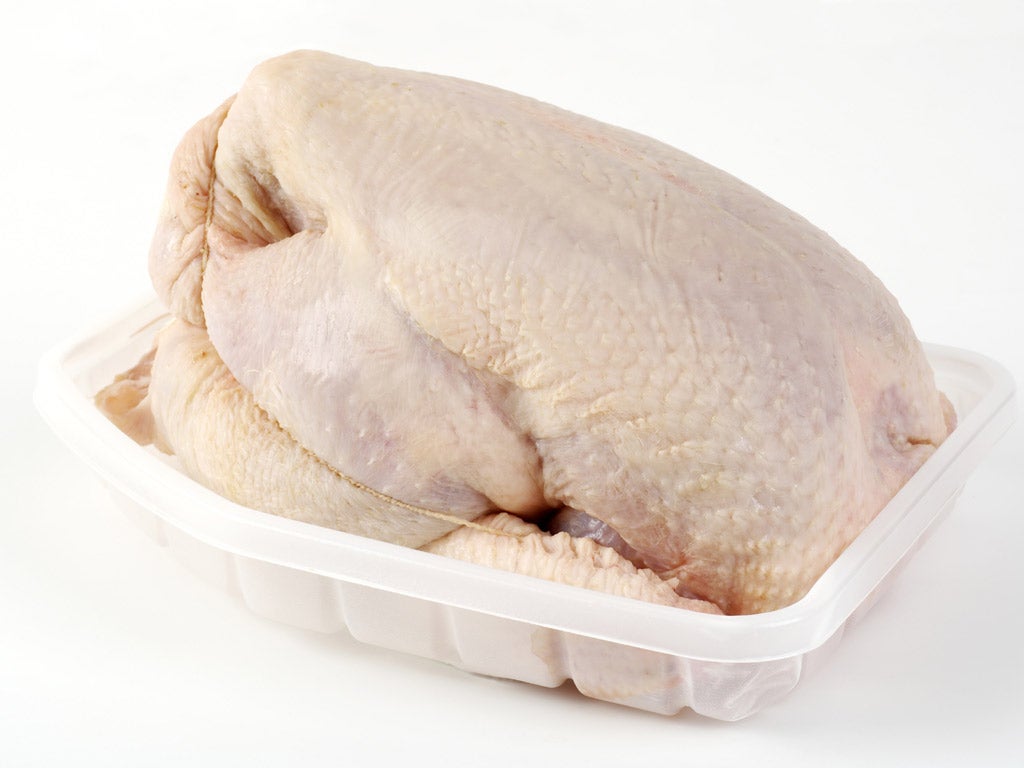Feeling clucky? There's a one in five chance your supermarket chicken has a nasty bug
Unless the affected chicken is cooked well, it can cause a bout of sickness lasting days

Your support helps us to tell the story
From reproductive rights to climate change to Big Tech, The Independent is on the ground when the story is developing. Whether it's investigating the financials of Elon Musk's pro-Trump PAC or producing our latest documentary, 'The A Word', which shines a light on the American women fighting for reproductive rights, we know how important it is to parse out the facts from the messaging.
At such a critical moment in US history, we need reporters on the ground. Your donation allows us to keep sending journalists to speak to both sides of the story.
The Independent is trusted by Americans across the entire political spectrum. And unlike many other quality news outlets, we choose not to lock Americans out of our reporting and analysis with paywalls. We believe quality journalism should be available to everyone, paid for by those who can afford it.
Your support makes all the difference.One in five supermarket chickens carries a food poisoning bug, according to new research.
Laboratory tests carried out by the consumer group Which? found that 18 per cent of whole and partial chickens from leading grocery chains was carrying campylobacter, the most common form of foodborne illness in the UK.
Unless contaminated chicken is properly refrigerated, stored separately from other foods and cooked thoroughly, it can cause a bout of sickness lasting days. Symptoms of campylobacter food poisoning include fever, nausea, stomach cramps and diarrhoea.
Although a substantial improvement on the 65 per cent infection in chickens found by the Food Standards Agency three years ago, Which? said its findings showed that campylobacter levels were "still unacceptable" and called for more action by producers and retailers. In response, the British Retail Consortium accused Which? of "scaremongering". Campylobacter occurs naturally in the guts of many animals. Chicken – the most popular form of meat in Britain – causes 20 to 30 per cent of cases, according to the European Food Safety Agency.
Officially there were 62,684 cases of campylobacter in England and Wales in 2010, but the Health Protection Agency estimates that for each reported case there are a further 9.3 unreported cases, meaning that the likely annual total in England and Wales is 582,000.
Taking into account that supermarkets sell almost half of chickens consumed in the UK, Which?'s findings suggest that as many as 61,000 people in England and Wales are falling ill each year from chicken sold by major grocery chains. Which? tested whole chickens and chicken portions from nine supermarkets: Aldi, Asda, Co-op, Lidl, M&S, Morrisons, Sainsbury's, Tesco and Waitrose. Levels of contamination varied, but all had at least one contaminated sample. Of the 192 tested, 18 per cent were contaminated with campylobacter, 17 per cent with listeria and 1.5 per cent with salmonella.
Which?'s executive director Richard Lloyd said: "While the situation is improving, it is still unacceptable that one in five chickens we tested were found to be contaminated with campylobacter. We want to see the risk of contamination minimised, because for far too long consumers have been expected to clean up mistakes made in the supply chain."
The Chartered Institute of Environmental Health praised the FSA and food industry for investing money to reduce the figures. Jenny Morris, its principal policy officer, added: "If nearly one fifth of chickens still carry contamination, we must make sure we do not relax rigorous hygiene practices." Many cases of campylobacter are thought to be spread by preparing vegetables for light cooking on chopping boards with residues of raw chickens.
British Retail Consortium food director, Andrew Opie, criticised Which? for referring to "contamination". He said: "Campylobacter is completely killed by normal cooking so providing people prepare chicken properly and follow sensible hygiene practices, they're at no risk."
Poultry in numbers
200,000 Estimated number of food-poisoning cases caused by infected supermarket chicken in the UK each year.
18 per cent The proportion of supermarket chickens that had campylobacter bacteria.
5 The fever and diarrhoea from campylobacter can last five days.
Join our commenting forum
Join thought-provoking conversations, follow other Independent readers and see their replies
Comments